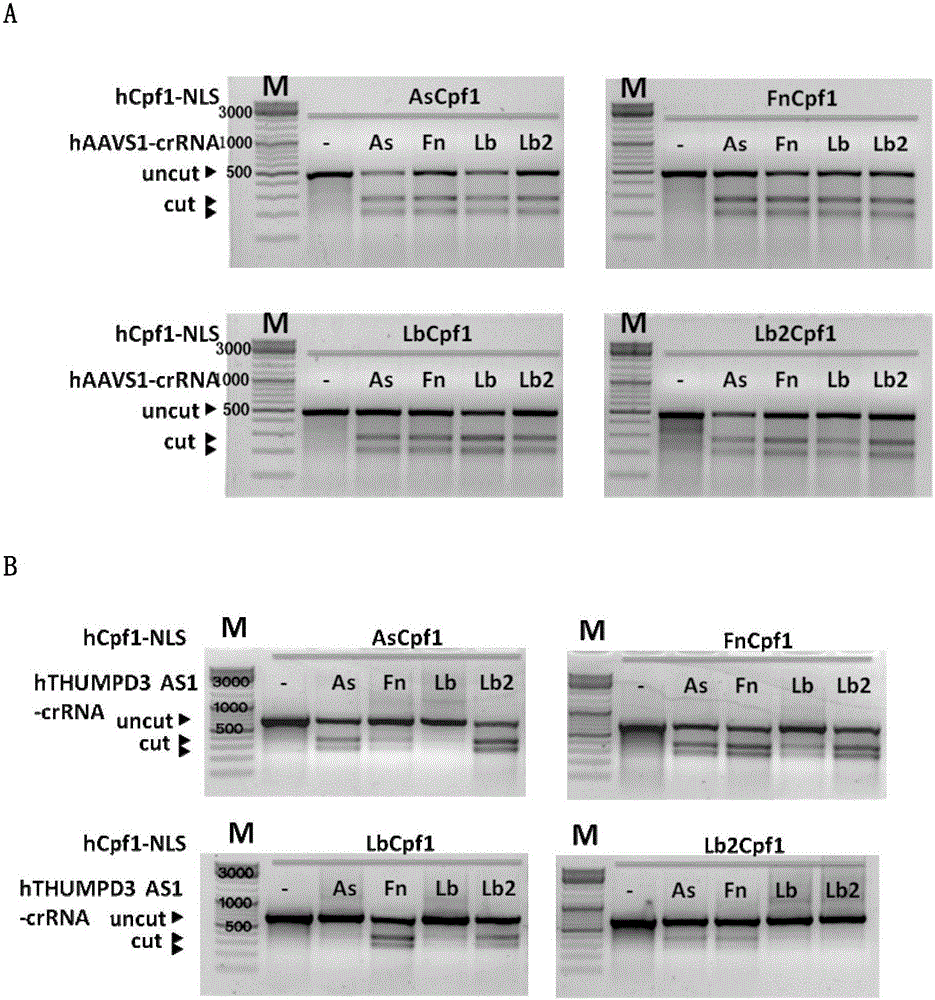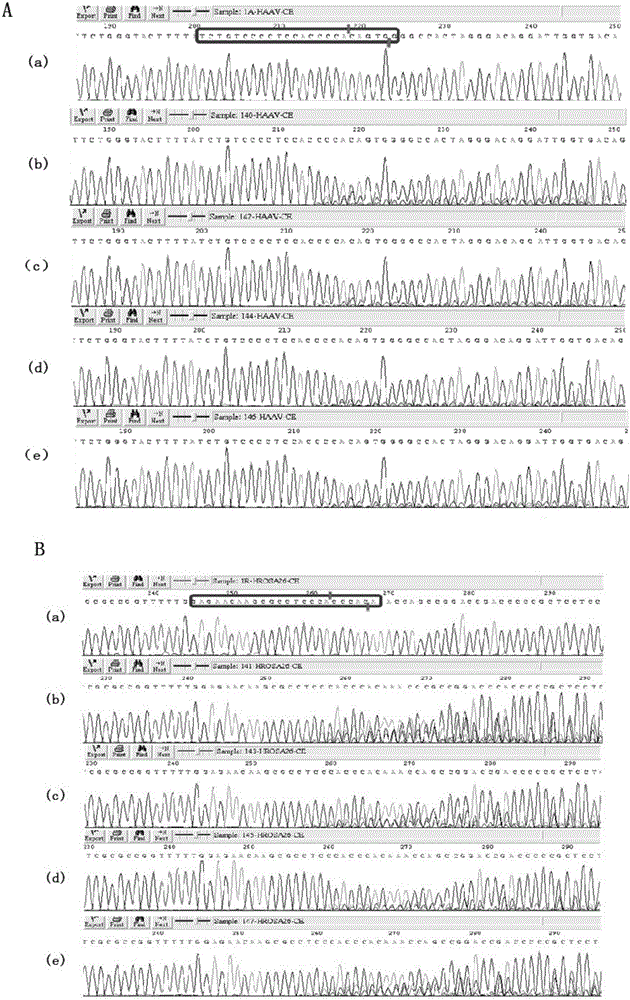Application of CRISPR (clustered regularly interspaced short palindromic repeats)/Cpf1 system with compounded crRNA in gene editing
A technique of cpf1 and chemical synthesis, applied in the application of CRISPR/Cpf1 system in gene editing, in the field of chemically synthesized crRNA, which can solve problems such as inability to cut
- Summary
- Abstract
- Description
- Claims
- Application Information
AI Technical Summary
Problems solved by technology
Method used
Image
Examples
Embodiment 1
[0088] Example 1. Detecting the gene editing ability of AsCRISPR / Cpf1 system, FnCRISPR / Cpf1 system, LbCRISPR / Cpf1 system and Lb2CRISPR / Cpf1 system
[0089] The hAAVS1 gene (Gene ID: 54776) and THUMPD3-AS1 gene (Gene ID: 440944) were selected as the target genes for detecting the gene editing capabilities of the AsCRISPR / Cpf1 system, FnCRISPR / Cpf1 system, LbCRISPR / Cpf1 system and Lb2CRISPR / Cpf1 system. The AsCRISPR / Cpf1 system is from Acidaminococcus_sp.BV3L6, which expresses the AsCpf1 protein shown in sequence 6 in the sequence listing; the FnCRISPR / Cpf1 system comes from Francisella_novicida, which expresses the FnCpf1 protein shown in sequence 5 in the sequence listing; the LbCRISPR / Cpf1 system comes from Lachnospiraceaebacterium ND2006 , which expresses the LbCpf1 protein shown in sequence 3 in the sequence listing; the Lb2CRISPR / Cpf1 system is from Lachnospiraceae_bacterium_MA2020, which expresses the Lb2Cpf1 protein shown in sequence 4 in the sequence listing.
[0090] T...
Embodiment 2
[0223] Example 2. Application of chemically synthesized crRNA for CRISPR / Cpf1 system in gene editing
[0224] 1. Preparation of chemically synthesized crRNA
[0225] Synthesize the crRNAs shown in Table 1. In Table 1, the single underline is the 2nd to 21st position from the 5' end of the Lb crRNA backbone sequence, the dotted line is the 2nd to 20th position from the 5' end of the Lb2crRNA backbone sequence, and the double underline is the target sequence I from the 5' end Positions 1 to 19, the box is the 1st to 23rd position from the 5' end of the target sequence I, the single wavy line is the 1st to 23rd position from the 5' end of the target sequence II, and the double wavy line is the 5' end of the target sequence II Numbers 1 to 19 from the end.
[0226] All the crRNAs shown in Table 1 are in one tube of 1OD (33 μg), and 66 μL of DEPC water is added to each tube to obtain an RNA solution with an RNA concentration of 0.5 μg / μL.
[0227] Table 1. Basic information of c...
PUM
 Login to View More
Login to View More Abstract
Description
Claims
Application Information
 Login to View More
Login to View More - R&D Engineer
- R&D Manager
- IP Professional
- Industry Leading Data Capabilities
- Powerful AI technology
- Patent DNA Extraction
Browse by: Latest US Patents, China's latest patents, Technical Efficacy Thesaurus, Application Domain, Technology Topic, Popular Technical Reports.
© 2024 PatSnap. All rights reserved.Legal|Privacy policy|Modern Slavery Act Transparency Statement|Sitemap|About US| Contact US: help@patsnap.com










